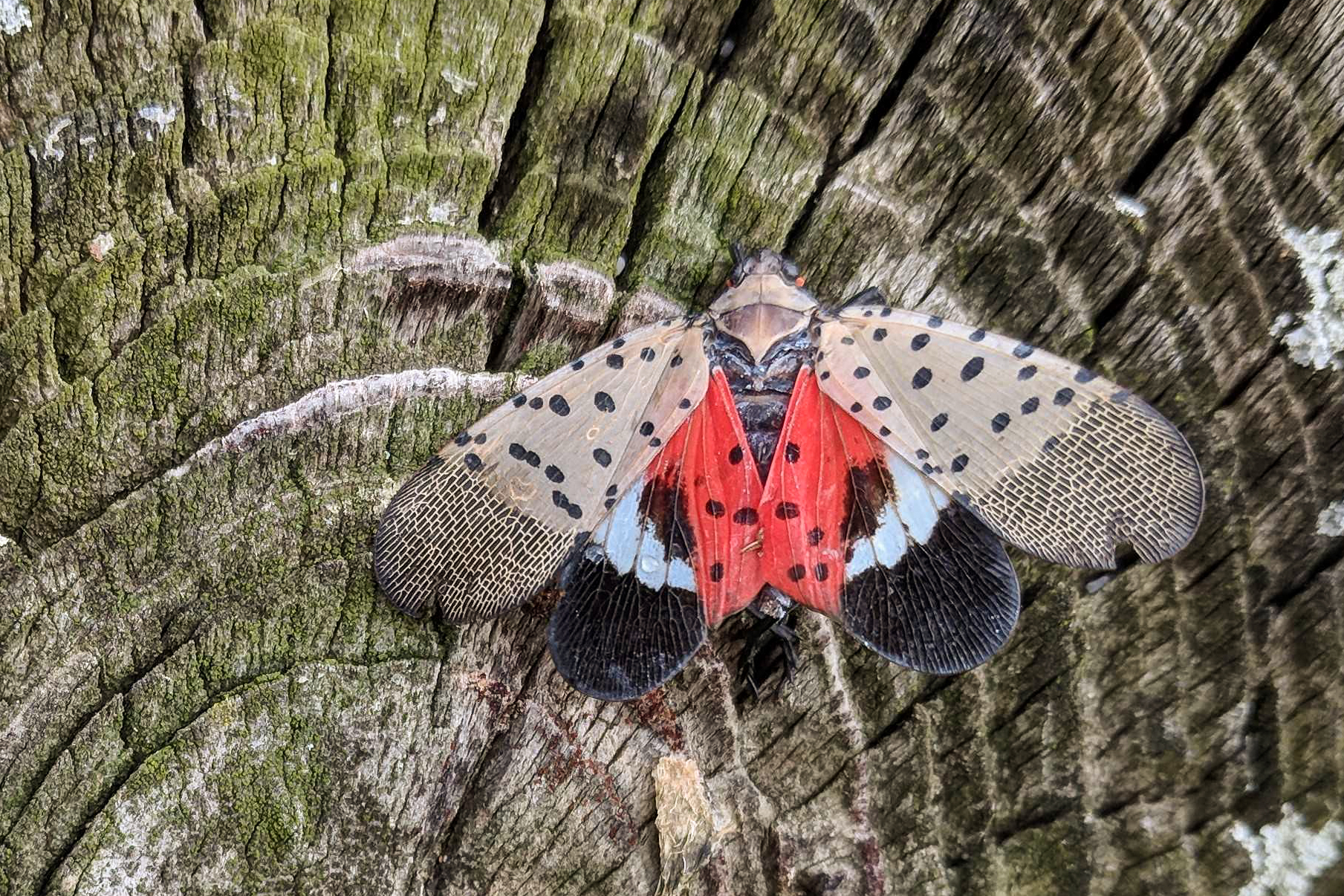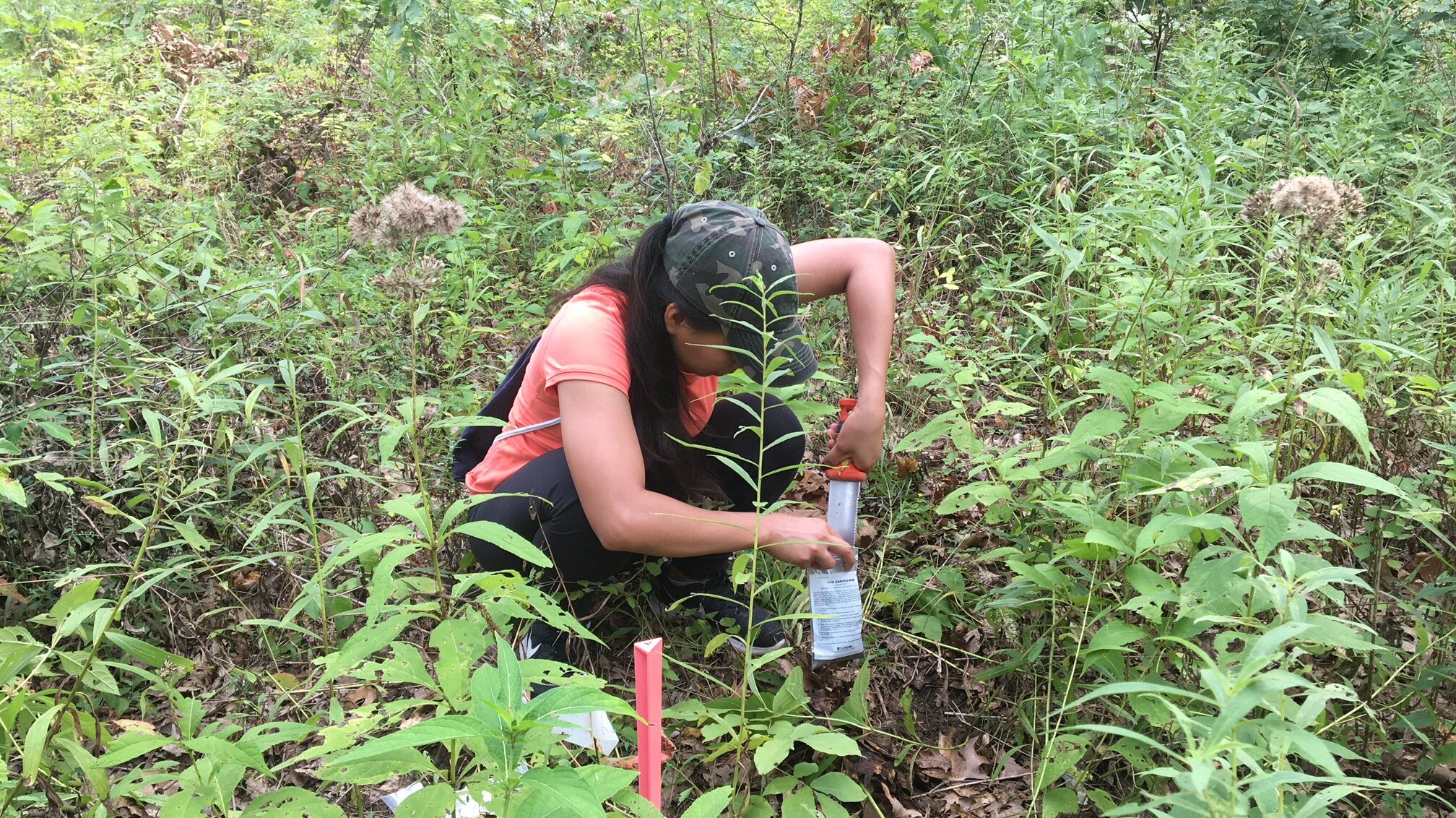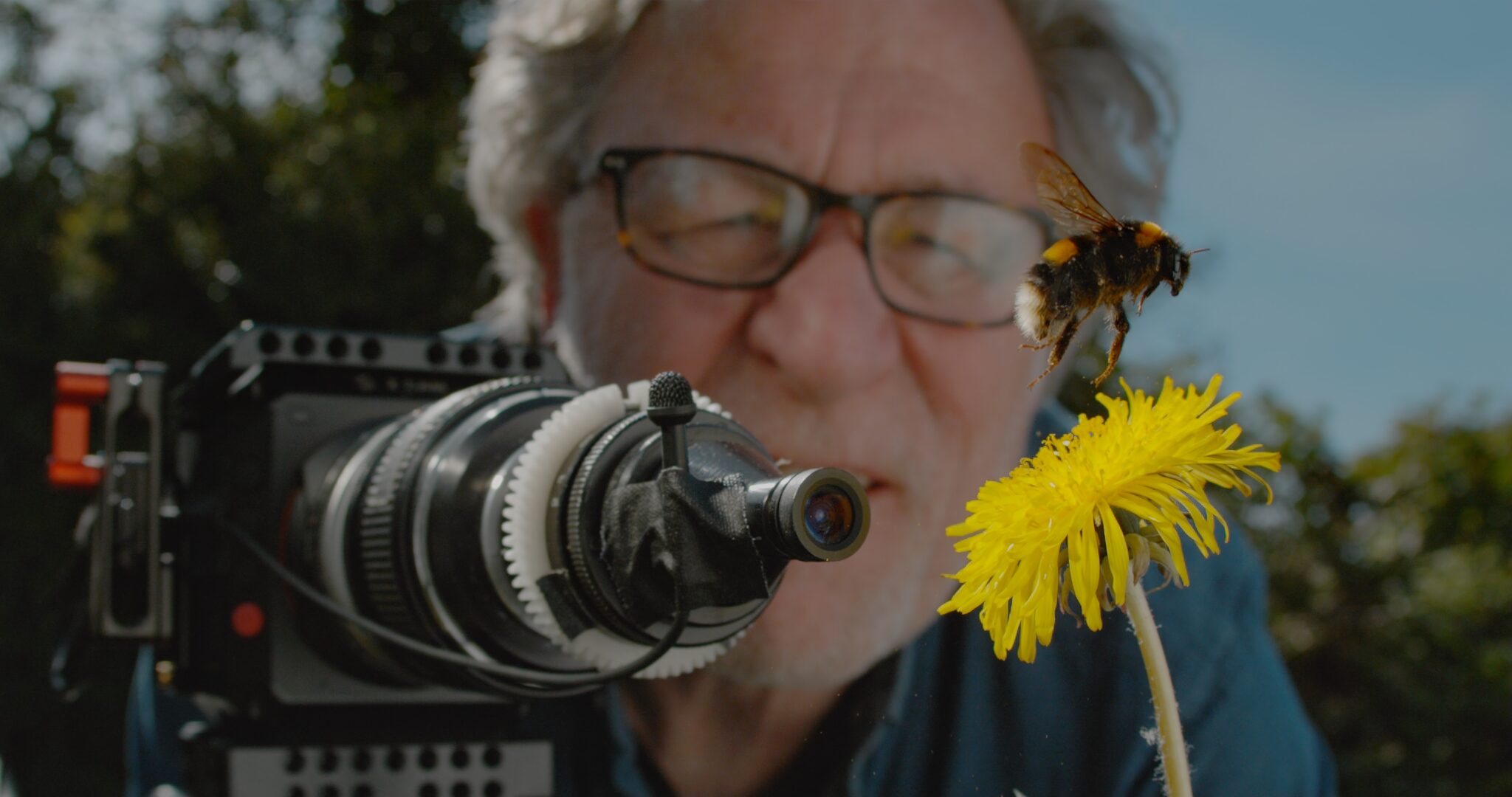This invasive species threatens agriculture but perhaps for not much longer, as trained dogs can detect their eggs in vineyards and forests.
By Eric Hawrylyshyn
Spotted lanternfly (SLF) are an invasive species of planthopper that was first detected in Pennsylvania in 2014. They have since spread farther throughout the United States to 17 other states. They feed on the phloem of plants, or the connective tissues that deliver food throughout the plant. Their target diet includes important agricultural species such as fruit trees, hops, and grapes, resulting in significant economic impacts. Early detection and eradication of SLF infestations before they become established—known as the “Early Detection and Rapid Response” (EDRR) strategy—is the best method of controlling invasive species.
In 2019, a Labrador Retriever and a Belgian Malinois were trained by the New York–New Jersey Trail Conference and Working Dogs for Conservation to detect SLF egg masses. Due to their innately strong sense of smell, the dogs performed much better at detecting SLF infestations in hard-to-reach, forested areas compared to humans, although humans’ visual inspections outperformed the dogs within the vineyards themselves. Therefore, a combination of well-trained humans and dogs may provide the best method to detect early SLF infestations. This will help to eradicate SLF before they become established, slowing down the further spread of SLF.
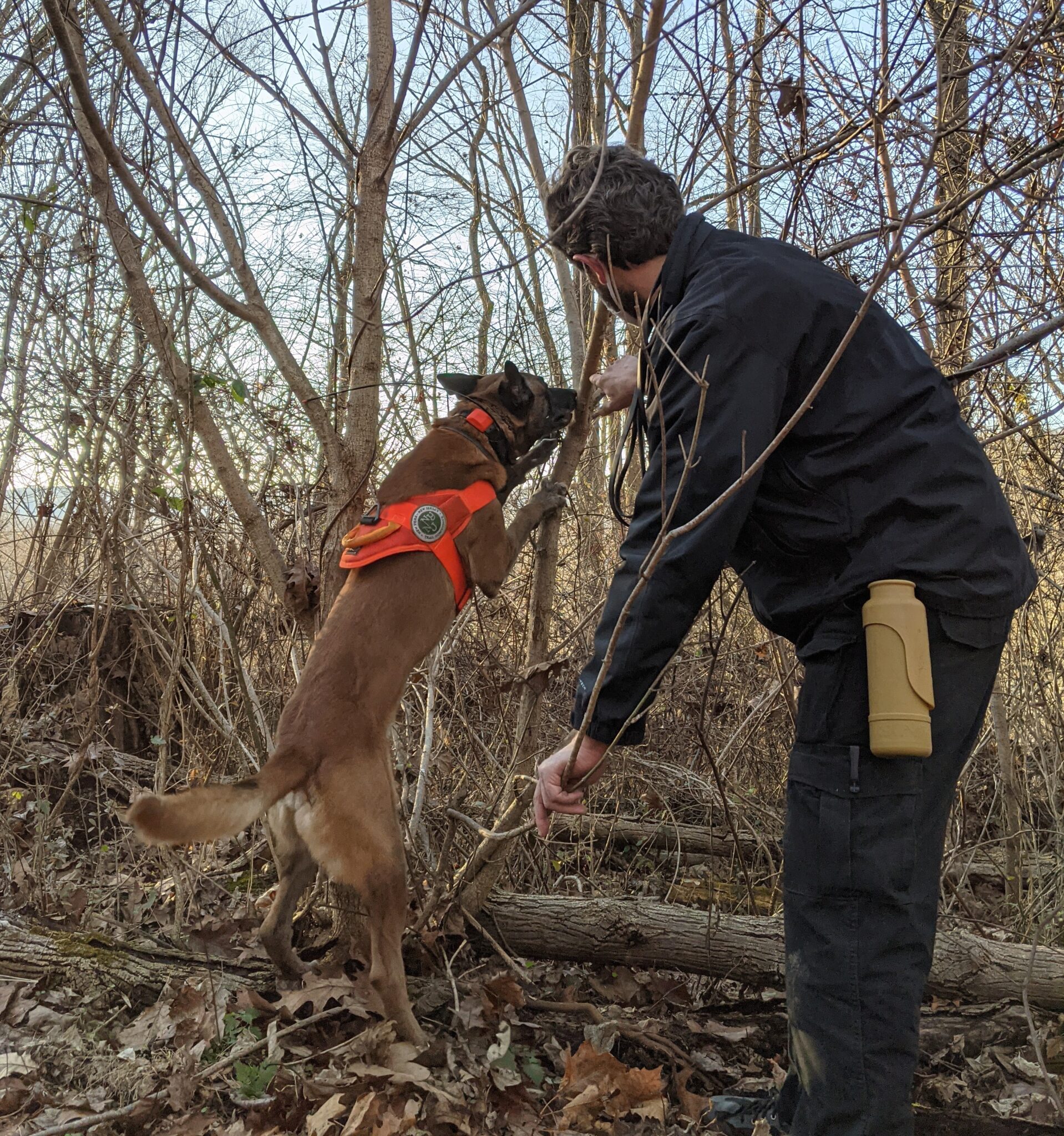
Humans vs. dogs: SLF detection
Spotted lanternfly have one generation per year and overwinter by laying egg masses from September to November. The egg masses subsequently hatch from May to June. The overwintering period is an ideal time to obtain information about the abundance and distribution of the invasive SLF during the subsequent growing season, as adults and nymphs are highly mobile. Usual detection method of egg masses involves visual surveys performed by humans, although the egg masses are cryptic and can be easily missed. Furthermore, SLF also lay eggs in forests near vineyards, a setting that is especially difficult for humans to perform visual surveys in. Therefore, this study tested if trained dogs could outperform humans in detecting SLF egg masses within both grape vineyards and nearby forests.
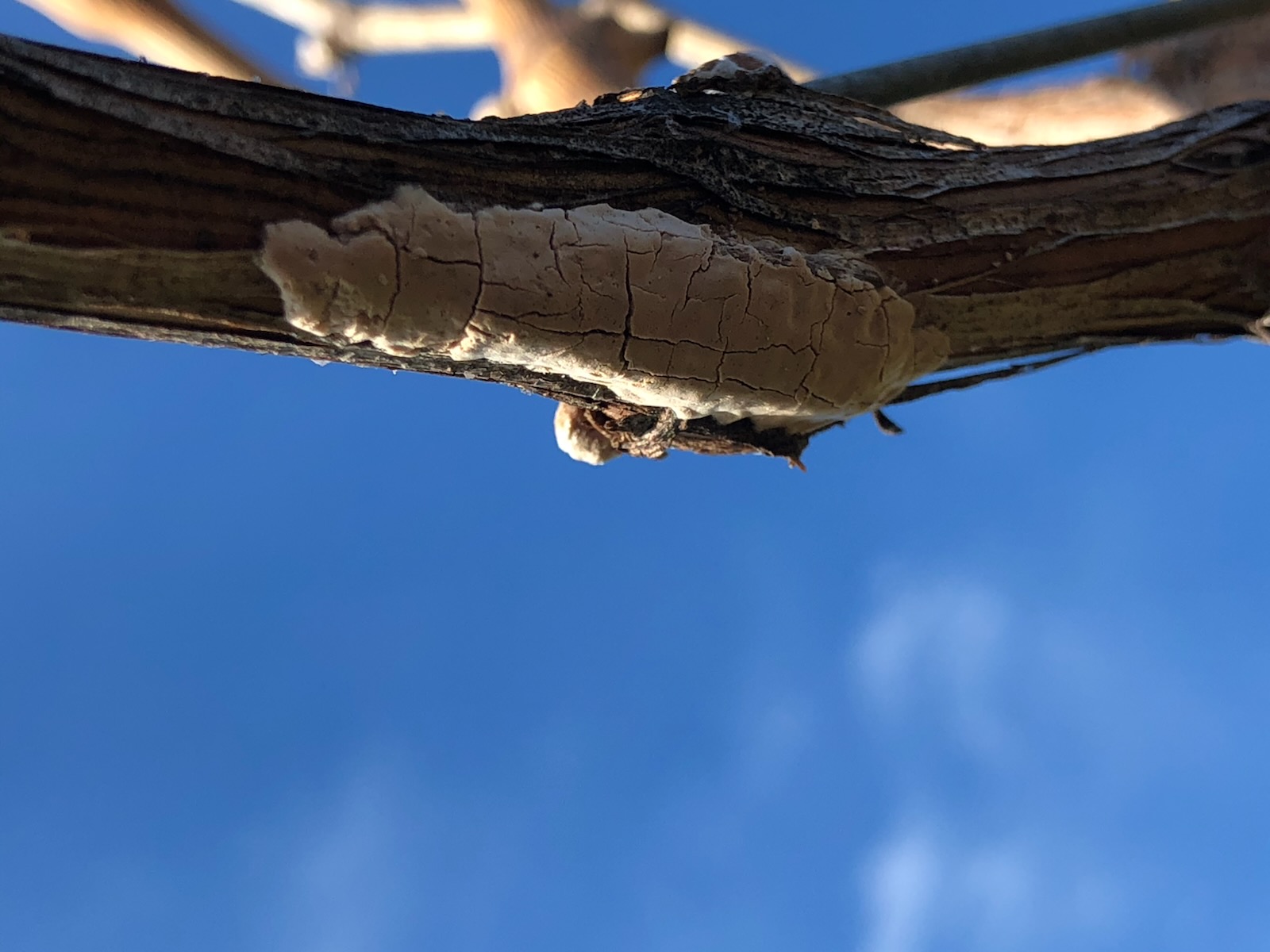
While the researchers found that the dogs had a lower SLF detection rate within the vineyards, the dogs greatly outperformed humans in the forest environment. Their detection rate was more than three times higher. This is likely due to the difficulty for humans to access all areas within the dense forest, and the number of branches and leaves that need to be visually surveyed. In comparison, the dogs’ scent surveys can detect SLF without examining each individual branch within the forest environment. Likewise, the sense of smell utilized by the dogs to find egg masses may be especially valuable in early-stage infestations. This is because there would be few egg masses to find, but there would be more contrast between the scent of an egg mass and the surrounding environment. This would enable the trained dogs to better hone in on the few that are present, catching infestations before they can become established. Overall, these results suggest that a mixed approach of using human-based and dog-based surveys to detect SLF infestations may be the most efficient option.
RELATED: Bats Protect Plants from Insects
The threat of invasive species
In addition to ecological impacts, invasive species such as the spotted lanternfly pose significant economical risks. In particular, the grape and wine industries have been negatively affected. SLF infestations have been found to cause 80 to 100 percent vine mortality in grape vineyards. This has led to three times the number of insecticide applications at an additional 170 percent, all while increasing the amount of chemicals the environment is being exposed to. In Pennsylvania alone, the researchers reported that SLF resulted in a loss of an estimated US $42.6 to $99.1 million for agricultural industries and an estimated US $152.6 to $263.3 million for forestry. Furthermore, a model developed in a separate 2022 study has suggested a high probability of SLF reaching California by 2033 if actions are not taken to control the spread. This would be detrimental as California produces 82 percent of the US grape crop.
RELATED: Battling Invasive Species with Virtual Ecology
There are important steps that everyone can take to aid in the fight to eradicate and stop the spread of the invasive spotted lanternfly. To prevent the spread of SLF, it is recommended that you follow the steps outlined by the United States Department of Agriculture (USDA; linked below). This includes checking trees and plants on your property for signs of SLF, keeping car windows and doors closed when parked, and being aware when traveling or moving items out of a quarantine zone. If you spot SLF or their eggs, the USDA recommends that you destroy them and report the sighting according to your local state’s Department of Agriculture. SLF pose no threat to humans and can safely be squashed, and egg masses should be smashed and scraped into a plastic zippered bag filled with hand sanitizer or rubbing alcohol.
Remember, the “Early Detection and Rapid Response” strategy is the best method of controlling invasive species. We can all play a part in ensuring its successful implementation.
This study was published in the peer-reviewed journal Ecosphere.
References
Fuller, A. K., Augustine, B. C., Clifton, E. H., Hajek, A. E., Blumenthal, A., Beese, J., Hurt, A., & Brown‐Lima, C. J. (2024). Effectiveness of canine‐assisted surveillance and human searches for early detection of invasive spotted lanternfly. Ecosphere, 15(12), e70113. https://doi.org/10.1002/ecs2.70113
Jones, C., Skrip, M. M., Seliger, B. J., Jones, S., Wakie, T., Takeuchi, Y., Petra, V., Petrasova, A., & Meentemeyer, R. K. (2022). Spotted lanternfly predicted to establish in California by 2033 without preventative management. Communications Biology, 5(1), 558.
Spotted lanternfly | Animal and Plant Health Inspection Service. (January 13, 2025). Animal and Plant Health Inspection Service. https://www.aphis.usda.gov/plant-pests-diseases/slf
Featured image is Spotted lanternfly in Lancaster County, Pennsylvania by Caitlyn Johnstone/Chesapeake Bay Program on Flickr. Licensed under CC BY-NC 2.0.

About the Author
Eric Hawrylyshyn received his bachelor of science in Zoology and master of science in Biomedical Science from the University of Guelph. Eric’s scientific and research interests focus on wildlife biology, conservation, and animal reproduction. He has previously worked as a zookeeper at different zoos in Canada. In his spare time, Eric enjoys spending time in nature, reading, and exercising. Connect with Eric via LinkedIn.

